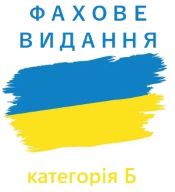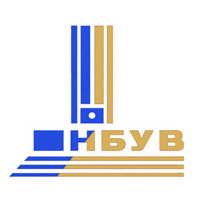Theoretical analysis of technological possibilities of reducing surface roughness at abrasive processing
DOI:
https://doi.org/10.31498/2225-6733.39.2019.201060Keywords:
fine-finishing with free abrasive, abrasive grains, a tool, internal grinding, processing performanceAbstract
The paper presents analytical dependences for determining the parameters of surface roughness at abrasive machining with cutting grains positioned spherically at the same height on the working surface of the tool and overlapping mutually in the process of forming the roughness of the processed surface. The calculations established that, provided that the cutting grains are located at the same height on the working surface of the tool as applied to the free abrasive finishing process, it becomes possible to significantly reduce the surface roughness parameters Ra and Rmax. The calculations also stated that these parameters are the less, the less the granularity of the abrasive or diamond grains is at processing. With an increase in the grain size of the diamond powder, in order to achieve the specified values of the surface roughness parameters Ra and Rmax, it is necessary to increase the number of the cutting grains forming the surface roughness. However, this leads to reduced processing performance. It has also been shown that it is not possible to put into practice the processing conditions under which the surface roughness parameters Ra and Rmax, established theoretically, become very small due to the difficulty of providing the same arrangement of abrasive grains on the working surface of the tool. Based on the theoretical solutions obtained, specific practical recommendations have been developed to reduce the surface roughness. So, an effective method of internal grinding has been developed using a soft felt (felt) wheel with a glued layer of abrasive powder 63C. This method can significantly reduce the surface roughness parameter Ra without increasing the complexity and reducing processing productivity. For its practical implementation, it is proposed to use abrasive powder with granularity F80-F150. In doing so, it is effective to grind by setting the axis of rotation of the grinding wheel with an individual drive perpendicular to the axis of rotation of the hole being machined. As a result, the number of simultaneously working abrasive grains significantly increases as compared to conventional internal grinding due to an increase in the contact area of the grinding wheel with the workpiece. Also, a certain different-height arrangement of cutting grains on the working surface of the tool, which takes place under real processing conditions, also decreases, which results in a decrease in the roughness of the machined surfaceReferences
Перелік використаних джерел (ДСТУ):
Маслов Е.Н. Теория шлифования материалов / Е.Н. Маслов. – М. : Машиностроение, 1974. – 319 с.
Хусу А.П. Шероховатость поверхностей (теоретико-вероятностный подход) / А.П. Ху-су, Ю.Р. Витенберг, В.А. Пальмов. – М. : Наука, 1975. – 344 с.
Королев А.В. Исследование процессов образования поверхностей инструмента и де-тали при абразивной обработке / А.В. Королев. – Саратов, 1975. – 212 с.
Новоселов Ю.К. Динамика формообразования поверхностей при абразивной обработке / Ю.К. Новоселов. – Саратов, 1979. – 232 с.
Евсеев Д.Г. Физические основы процесса шлифования / Д.Г. Евсеев, А.Н. Сальников. – Саратов, 1978. – 128 с.
Братан С.М. Технологічні основи забезпечення якості і підвищення стабільності високопродуктивного чистового та тонкого шліфування : автореф. дис. ... д-р техн. наук : 05.02.08 / Братан Сергій Михайлович. – Одеса, 2006. – 35 с.
Шкурупий В.Г. Аналитическое описание и технологическое обеспечение параметров шероховатости обработки / В.Г. Шкурупий, Ф.В. Новиков // Різання і інструмент в технологічних системах : Міжн. наук.-техн. зб. / НТУ «ХПІ» – Харків, 2004. – Вип. 67. – С. 46-56.
Физико-математическая теория процессов обработки материалов и технологии машиностроения : в 10 т. Т. 7. Точность обработки деталей машин / Под общ. ред. Ф.В. Новикова и А.В. Якимова. – Одесса : ОНПУ, 2004. – 546 с.
Шкурупій В.Г. Підвищення ефективності технології фінішної обробки поверхонь дета-лей із тонкого листа и стрічок: автореф. дис. ... канд. техн. наук : 05.02.08 / Шкурупій Валентин Григорович. – Одеса, 2006. – 21 с.
References:
Maslov E.N. Teoriia shlifovaniia materialov [Theory of grinding materials]. Moscow, Mashinostroenie Publ., 1974. 319 p. (Rus.)
Khusu A.P., Vitenberg Iu.R., Pal’mov V.A. Sherokhovatost’ poverkhnostei (teoretiko-veroiatnostnyi podkhod) [Surface roughness (probability-theoretical approach)]. Moscow, Nauka Publ., 1975. 344 p. (Rus.)
Korolev A.V. Issledovanie protsessov obrazovaniia poverkhnostei instrumenta i detali pri abrazivnoi obrabotke [The study of the processes of formation of tool surfaces and parts during abrasive processing]. Saratov, 1975. 212 p. (Rus.)
Novoselov Iu.K. Dinamika formoobrazovaniia poverkhnostei pri abrazivnoi obrabotke [The dynamics of the formation of surfaces during abrasive processing]. Saratov, 1979. 232 p. (Rus.)
Evseev D.G., Sal’nikov A.N. Fizicheskie osnovy protsessa shlifovaniia [The physical basis of the grinding process]. Saratov, 1978. 128 p. (Rus.)
Bratan S.M. Tekhnologіchnі osnovi zabezpechennia iakostі і pіdvishchennia stabіl’nostі visokopro-duktivnogo chistovogo ta tonkogo shlіfuvannia. Avtoref. diss. dokt. techn. nauk [Technological basis for quality assurance and stability improvement of high-performance fine and fine grinding. Thesis of doct. tech. sci. diss.]. Odesa, 2006. 35 p. (Ukr.)
Shkurupii V.G., Novikov F.V. Analiticheskoe opisanie i tekhnologicheskoe obespechenie parametrov sherokhovatosti obrabotki [Analytical description and technological support of processing roughness parameters]. Rіzannia і іnstrument v tekhnologіchnikh sistemakh – Cutting & tools in technological systems, 2004, vol. 67, pp. 46-56. (Rus.)
After ed. Novikov F.V., Iakimov A.V. Fiziko-matematicheskaia teoriia protsessov obrabotki materialov i tekhnologii mashinostroeniia. Tom 7: Tochnost’ obrabotki detalei mashin [Physicomathematical theory of materials processing processes and engineering technology. Vol. 7: Machining accuracy]. Odessa, 2004. 546 p. (Rus.)
Shkurupii V.G. Pіdvishchennia efektivnostі tekhnologії fіnіshnoї obrobki poverkhon’ detalei іz tonkogo lista i strіchok. Avtoref. diss. kand. techn. nauk [Improving the efficiency of the surface finishing technology of thin sheet and ribbon parts. Thesis of cand. tech. sci. diss.]. Odesa, 2006. 21 p. (Ukr.)
Downloads
How to Cite
Issue
Section
License
The journal «Reporter of the Priazovskyi State Technical University. Section: Technical sciences» is published under the CC BY license (Attribution License).
This license allows for the distribution, editing, modification, and use of the work as a basis for derivative works, even for commercial purposes, provided that proper attribution is given. It is the most flexible of all available licenses and is recommended for maximum dissemination and use of non-restricted materials.
Authors who publish in this journal agree to the following terms:
1. Authors retain the copyright of their work and grant the journal the right of first publication under the terms of the Creative Commons Attribution License (CC BY). This license allows others to freely distribute the published work, provided that proper attribution is given to the original authors and the first publication of the work in this journal is acknowledged.
2. Authors are allowed to enter into separate, additional agreements for non-exclusive distribution of the work in the same form as published in this journal (e.g., depositing it in an institutional repository or including it in a monograph), provided that a reference to the first publication in this journal is maintained.









